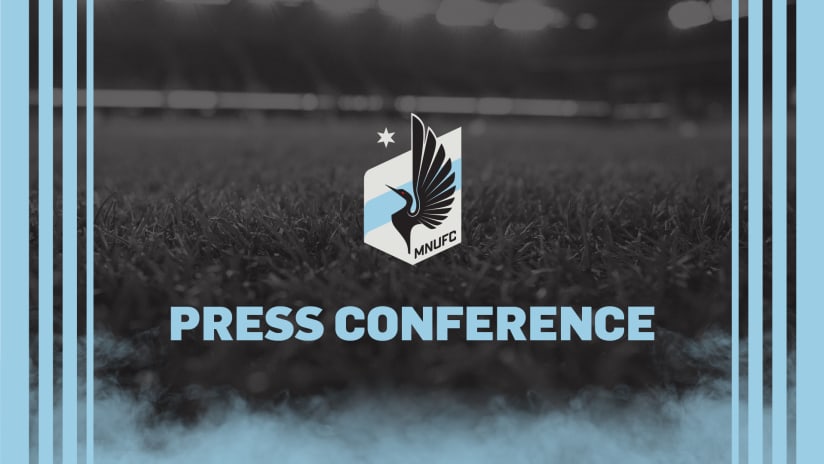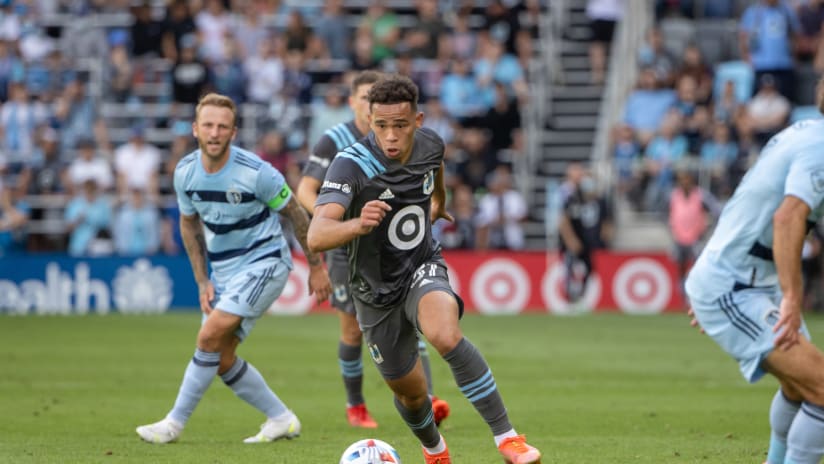When it comes to getting calls in the box, fortune has not favored the Loons this season. Coming into Sunday’s matinee matchup with Sporting Kansas City — the second-to-last game of the regular season — MNUFC had only taken one penalty shot all year, and that was back on July 3 against the San Jose Earthquakes, taken and missed by Ramón Ábila, who isn’t even on the roster anymore. You’d be forgiven, then, for not being sure who would step to the spot to take it when midfielder Emanuel Reynoso was brought down in the box late in the first half.
“Adrien [Hunou] grabbed it but I was confident,” Reynoso said after the game. “They had given me the penalty. I had decided to grab it and thank God that Adrien didn’t have a problem with that. He gave me the ball. I had a lot of confidence and thank God I could score.”
For the player on either side of the ball, penalty kicks come down to a blend of research and instinct. One benefit of not having taken a lot of penalties on the year is that it makes Minnesota a bit unpredictable but some of the calculus remains the same: the keeper guesses in a direction and the player taking the penalty hopes he guesses wrong or that he can beat him high much of the time.
But as recently as December of last year, Sporting Kansas City’s Tim Melia had forced opponents into the lowest penalty conversion rate in league history among keepers who have faced at least 10, with 12 of the 26 penalty shots he’s faced going awry — a conversion rate of just 53.6% on a shot where the average is around 75%.
Asked about his technique at that time by ESPN, Melia said, “It's the same thing I've learned playing in a game. Players are going to drag a ball across, or a player is going to open up his hips and dip his shoulder and curl a ball. It's just things that over time become natural. It's like a map, essentially."
So what did Reynoso do? He ripped up the map.
Reynoso executed a particularly cheeky kind of penalty kick known by many names throughout the world but most commonly as a panenka. (In Reynoso’s native Argentina it’s called a picado, the Spanish word for “chopped” and usually referring to a dish with grilled, chopped steak.) Much like the Maradona, the panenka is named for its creator, Antonín Panenka. The now-72-year-old Czech midfielder brought his innovation to the pitch in the 1976 Euro final between then-West Germany and then-Czechoslovakia. Panenka scored the winning penalty in a shootout with a softly chipped ball up the middle as goalkeeper Sepp Maier dove to his left.
In a sport whose modern-day iteration is often consumed with what is the most effective, efficient or tactically sound, the panenka can be a joyous reminder of the artistry, the bravado, the risk and the willful weirdness of the game. While there may be some element of strategy to striking it slowly down the middle to — allowing the goalkeeper to sprawl all the way out and take himself out of the play — the strongest element of the shot is gamesmanship. It’s a risky move that’s gone wrong for plenty of players. There’s an audacity to it, a casualness that invites rage or frustration at being shown up. Much the way that Dominique Wilkins’ dunks were said to be so emphatic they were worth more than two points, a player confident enough to step up and nail a panenka can demoralize an opponent and take the wind completely out of their sails.
Panenka himself said, “I saw myself as an entertainer and I saw this penalty as a reflection of my personality. I wanted to give the fans something new to see, to create something that would get them talking."





